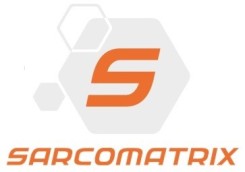
 - Print - PDF Mobile - PDF
- Print - PDF Mobile - PDF

Sarcomatrix Therapeutics - Pioneering Groundbreaking, Unique Treatments for Muscle Disorders, Aiming to Empower Individuals with Longer Stronger Lives
 David Craig, MBA
David Craig, MBA
President and CEO
Sarcomatrix Therapeutics, Corporation
https://sarcomatrix.com/
Contact:
David Craig, MBA, President and CEO
Sarcomatrix Therapeutics, Corporation
450 Sinclair Street
Reno, NV 89501
775-525-1795
info@sarcomatrix.com
Interview conducted by:
Lynn Fosse, Senior Editor
CEOCFO Magazine
Published – November 20, 2023
CEOCFO: Mr. Craig, what is the vision behind Sarcomatrix Therapeutics?
Mr. Craig: When working properly, the body's daily muscle regeneration is extraordinary, demonstrating resilience and adaptability. Muscles, worn by daily activities, undergo efficient repair, healing, and strengthening. This balance of muscle breakdown and rebuilding showcases the body's sophisticated, dynamic self-maintenance and cellular coordination.
Sarcomatrix is pioneering groundbreaking, unique treatments for muscle disorders – conditions in which the body's normal muscle regeneration has been disrupted. We aim to empower individuals with those conditions to live longer stronger lives.
Specifically, our drugs have the potential to treat conditions known as 'muscle wasting' in medical terms and can also be called 'muscle loss' or 'muscle shrinkage.' This refers to the weakening and reduction in muscle size, often resulting from aging (sarcopenia), associated with chronic diseases (cachexia), secondary to chemotherapy (cachexia), or caused by genetic defects (muscular dystrophies).
CEOCFO: What is the standard approach today and what is the approach you are taking?
Mr. Craig: The largest market comprises over a billion seniors worldwide affected by sarcopenia, a condition of muscle loss that occurs with normal aging, independent of exercise or dietary habits. Cachexia is muscle wasting acquired secondary to either a chronic disease like chronic obstructive pulmonary disease or some cancer therapies; this condition affects at least 90 million individuals worldwide. The most severe form of muscle wasting due to genetic defects, known as muscular dystrophy, affects at least 2.5 million individuals worldwide. We believe the path to the large sarcopenia and cachexia markets are through muscular dystrophy.
There are no treatments for sarcopenia, cachexia nor muscular dystrophy - therapies just delay disease progression, best case.
Our strategy hinges on utilizing fundamental research to create groundbreaking, first-in-class treatments that target the underlying causes of muscle wasting. We concentrate on laminin and integrins—key structural proteins and cell signaling molecules. Our research team possesses unparalleled and in-depth expertise in these areas, setting the stage for innovative therapeutic solutions.
CEOCFO: What is being worked on under your guidance right now?
Mr. Craig: I live at beautiful Lake Tahoe and was fortunate to serve as an entrepreneur in residence at the University of Nevada Reno (UNR), during which time I had a chance to evaluate drugs, devices and vaccines at many UNR research laboratories. There are two world class laboratories working on muscular dystrophy at UNR, the Peter and Takako Jones Lab for FSHD and the Dean Burkin Lab researching laminin and integrins for Duchenne, Becker and Congenital Muscular Dystrophies.
Considering the world class research of the Dean Burkin Lab, and the significant progress they have made advancing small molecules and proteins to treat muscular dystrophies, we started Sarcomatrix to accelerate the development and commercialization of the drugs advancing through pre-clinical research. Beyond my passion to focus on rare diseases, I was drawn to the Burkin lab because one of their compounds holds potential benefits for several of my family members. Also, my former colleague from Gilead, Mick Hitchcock, had already licensed the research of the Peter and Takako Jones lab for FSHD.
We are currently highly focused on two Muscular Dystrophy programs that will lead the way to our ultimate focus on cachexia and sarcopenia.
Our Congenital Muscular Dystrophy program’s initial focus is LAMA2-RD and includes laminin-111 as protein replacement therapy, an option to in-license CRISPR therapy and a small molecule eligible to enter Phase 2 clinical trials. As the name implies, Congenital Muscular Dystrophy manifests early in life, bringing with it muscle weakness and developmental delays. As it progresses, individuals may face difficulties in mobility, requiring assistive devices like wheelchairs. Respiratory issues are also common, necessitating attentive care and sometimes mechanical support.
CEOCFO: How does the drug work?
Mr. Craig: Infants born with LAMA2-RD have mutations that result in a partial or complete absence of a version of the protein laminin, called laminin-211, that is critical to normal muscle function. Our LAMA2-RD program incorporates several treatment options to treat this condition. Our lead compound laminin-111 is a genetically engineered human protein identical to the embryonic version of the laminin protein humans express when born. Normally, laminin-111 is replaced by laminin-211 during childhood, and in individuals living with LAMA2-RD a defective gene codes for laminin-411, an ineffective isoform. As laminin-211 is critical to build the muscle basement membrane, by administering the embryonic protein laminin-111 monthly, we should be able to rebuild muscle in individual living with LAMA2-RD. Also, considering the severity of this disease, we envision combination therapy is needed which is why we’re considering CRISPR and small molecule programs as our basic research advances.
CEOCFO: How are you creating the protein?
Mr. Craig: We contracted with BioLamina a Swedish biotechnology company that develops laminin proteins for a variety of ex-vivo applications. The cell line producing recombinant human laminin-111 (rhLAM-111) was created by CEVEC, a German biopharmaceutical firm that specializes in the use of the CAP® human cell-based expression system. CAP cells are optimally suited for complex proteins such as laminins and for proteins that are difficult to express in conventional CHO lines.
CEOCFO: What else are you working on today?
Mr. Craig: Our Duchenne/Becker Muscular Dystrophy program involves development of small molecules that enhance an isoform of the protein integrin. This version of integrin is expressed on the muscle membrane, stabilizing the muscle, and “signaling” it to repair itself. This muscle-specific protein is up regulated by our small molecules. Our first-generation drug S-969 is within 12 months of IND approval enabling human clinical trials, and we’re already working on second generation compounds to extend our patent runway for decades to come.
The Burkin Lab has been working with the NIH for years and developed our small molecules in collaborations with the National Center for Advancing Translational Sciences (NCATS) at the National Institutes of Health, using a novel and proprietary muscle screening assay.
The muscle cell membrane, known as the sarcolemma, contains two key proteins: dystrophin-glycoprotein complex (DGC) and alpha 7 beta 1-integrin. These proteins are not only structural but also play a role in signal transmission. They connect the extracellular matrix outside the cell to its interior and help in communicating signals back and forth. This signaling is crucial for muscle regeneration, especially following muscle overstretching or injury. Understanding when and how to stimulate this regeneration, which involves mechanical transduction, is essential for effective muscle cell repair and growth. Alpha 7 beta 1 integrin is the most important protein for mechanical transduction.
What differentiates Sarcomatrix from other companies developing treatments for Duchenne and Beckers Muscular dystrophy is our focus on the α7β1 integrin complex, one of two protein complexes that stabilize and repair muscle cells. Our competitors all focus on the dystrophin glycoprotein complex, and to date have demonstrated partial success. To treat Duchenne, Beckers and other muscular dystrophies we believe a combination of treatments for the α7β1 integrin and dystrophin glycoprotein complex are mandatory.
CEOCFO: Where are you in that process?
Mr. Craig: To align with the current funding environment our strategy is to raise a $5M seed round to advance our small molecule S-969 through IND approval and a combination Phase 1+2 Clinical trial in Duchenne and Beckers patients. With final safety data and efficacy signal, a follow-on Series A will fund the final Phase 3 trail and filing to FDA approval by 2026.
I've structured a $5 million seed convertible note and have secured a soft commitment of $1 million from the Battle Born Fund in Nevada. My efforts are now focused on engaging with various venture capitalists to find a syndicate lead who can contribute the remaining $4 million for this round.
CEOCFO: Does it easily make sense to potential investors?
Mr. Craig: We’ve funded our lead novel first-in-class candidate S-969 to IND approval via a recent NIH Phase 2b grant of $1.95M, and this seed round will take us through a combination Phase 1+2 proof of concept trial.
As I reflect on the hundreds of presentations and meetings with Angels and Venture Capitalists in the past nine months, it seems like many are looking for one of two programs: either a novel first-in-class target looking for lead optimization support, typically leveraging artificial intelligence tools, or a late pre-clinical program with proven safety and a clear efficacy signal often seen in a Phase 3 program.
Our strategy is to de-risk the program with a small investment today to support a larger Series A in the future.
CEOCFO: How do you personally keep from being frustrated given the potential value yet so many constraints?
Mr. Craig: Engaging in heartfelt conversations with my sister, brother-in-law and niece regularly anchors me to our core mission as they live with congenital muscular dystrophy every day. These personal interactions complement my frequent dialogues with patient groups, including the Muscular Dystrophy Association and the LAMA2 Societies across Europe. Staying intimately connected with both patients and researchers deeply involved in the field enriches my perspective. Additionally, presenting at prominent events like BIO International and being a part of JP Morgan conferences offer invaluable opportunities. These platforms not only pull me out of the routine office environment but also allow for dynamic exchanges about our program, refining our message, and exploring new possibilities. This journey is a testament to the power of persistence, creativity, and relentless drive. It's about pushing forward, constantly seeking solutions, and never losing sight of the goal.
CEOCFO: What if anything are people missing when they look at Sarcomatrix Therapeutics that they need to understand?
Mr. Craig: The markets for muscle-wasting conditions like cachexia and sarcopenia are vast, and understandably, they're a significant target for big pharma. However, the journey to these markets passes through a comprehensive understanding of the realm of muscular dystrophies, a puzzle we feel we are well positioned to solve first. Muscular Dystrophy encompasses multiple mutations resulting in various forms of muscular dysfunction. Our staff has developed unsurpassed expertise on the intricacies of the expression of those mutations on the proteins required for muscle function. Leveraging that expertise will lead us to solutions for all muscle wasting conditions.
Sarcomatrix Therapeutics, Corporation | Muscle Regeneration Therapy | David Craig, MBA | Sarcomatrix Therapeutics - Pioneering Groundbreaking, Unique Treatments for Muscle Disorders, Aiming to Empower Individuals with Longer Stronger Lives | CEO Interviews 2023 | Medical Companies | Muscular dystrophy | breakthroughs in muscle regeneration | treat muscle diseases | Treatment for Congenital | Duchenne Treatments | New Treatment for Beckers Muscular Dystrophies | Cachexia Treatments | Muscle Wasting Treatments | Chemotherapy Muscle Wasting | Treatment for Sarcopenia | New Treatment for Age Related Muscle Wasting | Small Molecule α7β1 integrin activators and proteins | Exon Skipping | Gene Editing | Gene Therapy Technologies | S-969 | LAM 111 | Sarcomatrix Therapeutics, Corporation Press Releases, News, Linkedin












 -
-
 David Craig, MBA
David Craig, MBA